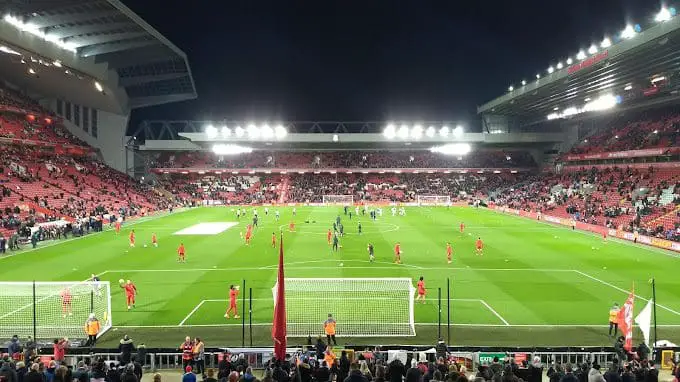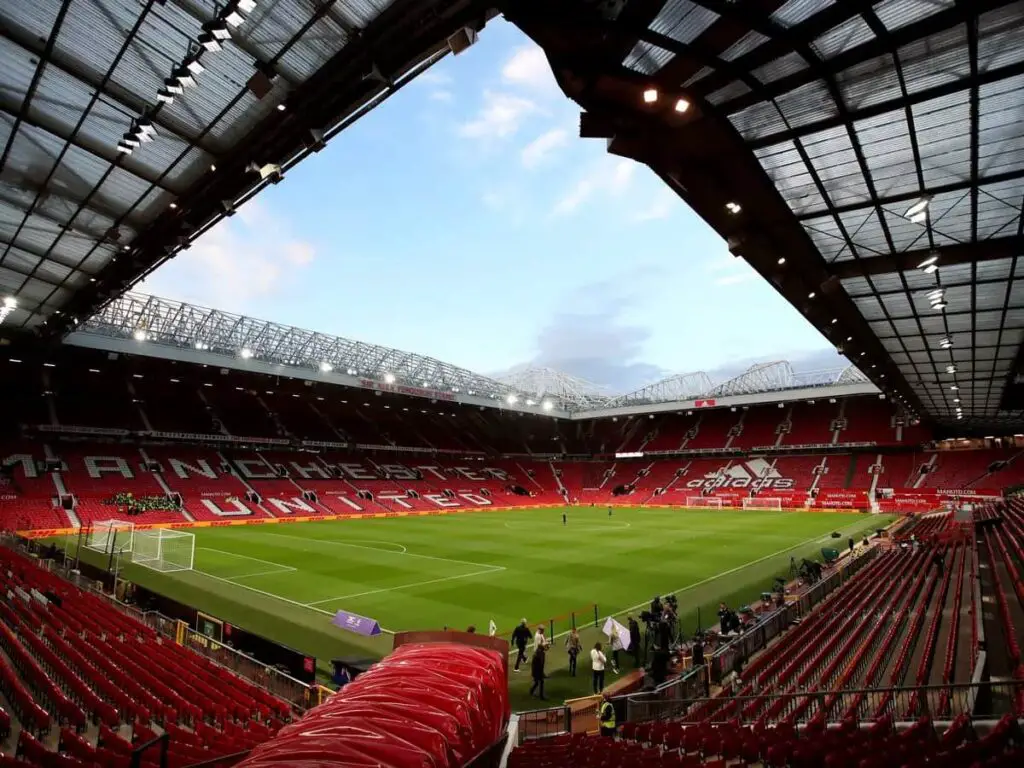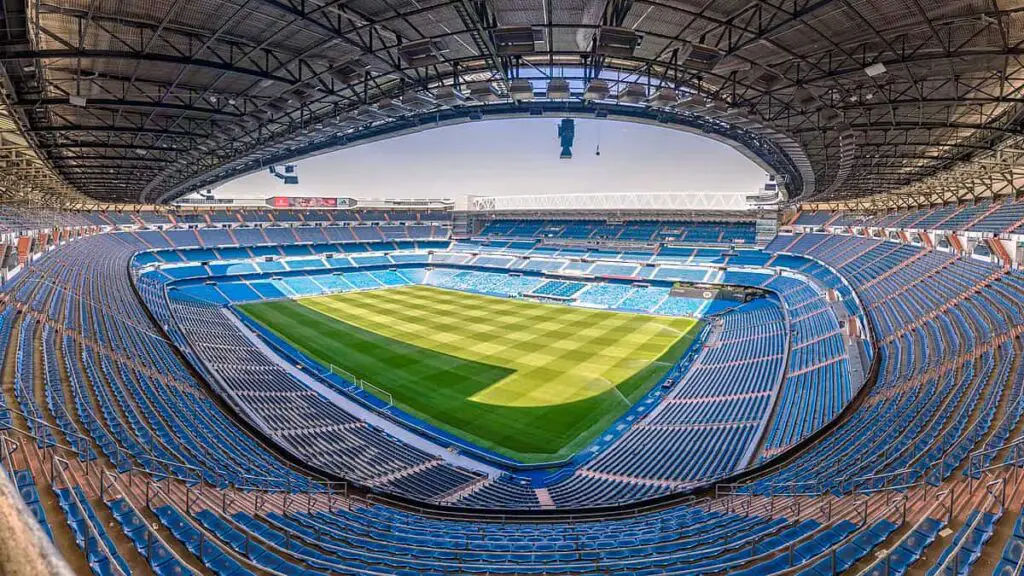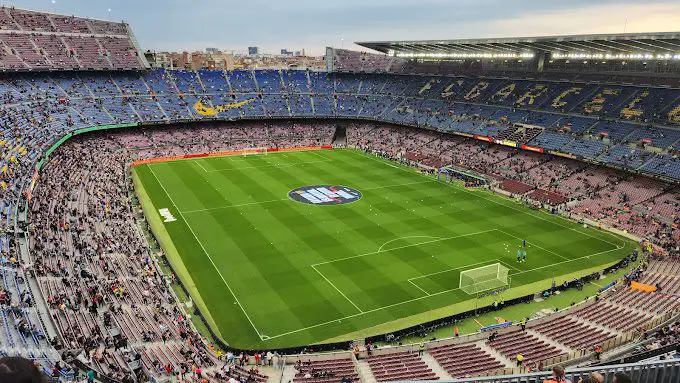European football (soccer) is synonymous with passion, history, and iconic stadiums. Football isn’t just a sport; it’s a religion, and these arenas are its cathedrals. Let’s embark on a pilgrimage through Europe’s most awe-inspiring football sanctuaries.
1. Camp Nou – FC Barcelona, Spain
- Year Built: 1957
- Location: Barcelona
- Owner: FC Barcelona
- Field Size: 105 x 68 m
- Architect: Francesc Mitjans
- Transport Connection: Metro L3 (Palau Reial or Les Corts stations), multiple bus lines.
- Big Matches: 1982 FIFA World Cup semi-final, multiple El Clásicos.
A cauldron of Catalan culture, Camp Nou is Europe’s largest stadium. Fans describe match days as a transcendental experience, an electrifying mix of football and festivity.
Boasting a staggering seating capacity of nearly 100,000, Camp Nou isn’t just a stadium; it’s an emotion. The largest stadium in Spain and Europe, it has witnessed FC Barcelona’s prowess for over six decades. A notable feature is its “Espai Barça” zone, which integrates a world-class innovation hub. With an estimated 1.5 million visitors yearly to its museum alone, it remains a major tourism asset for Catalonia.

2. Wembley Stadium – England
- Year Built: Originally in 1923, rebuilt and reopened in 2007.
- Location: London
- Owner: The Football Association
- Field Size: 105 x 68 m
- Architect: Foster and Partners & Populous (for the rebuilt version)
- Transport Connection: Wembley Park tube station, Wembley Central train station.
- Big Matches: 1966 FIFA World Cup final, UEFA Euro 2020 final, countless FA Cup finals.
The quintessential home of football, Wembley’s iconic arch is recognizable worldwide. It’s a place where dreams are made or shattered.
Replacing the 1923 original, the new Wembley’s majestic arch rises 133m above the pitch, visible across London. It has the largest roof-covered seating capacity in the world, sheltering every one of its 90,000 seats. With 2,618 toilets, Wembley also holds the record for the most number of loos in any venue worldwide!

3. Allianz Arena – FC Bayern Munich, Germany
- Year Built: 2005
- Location: Munich
- Owner: FC Bayern Munich
- Field Size: 105 x 68 m
- Architect: Herzog & de Meuron
- Transport Connection: Fröttmaning U-Bahn station.
- Big Matches: 2012 UEFA Champions League final, various Bundesliga title deciders.
The Allianz Arena’s illuminating facade lights up Munich nights. Its futuristic design perfectly complements Bayern’s trailblazing football style.
Home to FC Bayern, this piece of architectural marvel is famous for its illuminating façade comprising 2,874 inflated ETFE plastic panels, capable of creating a beautiful light display. With 75,000 seating capacity, it was the first stadium to host a FIFA World Cup match with a full-colored exterior.

4. San Siro – AC Milan & Inter Milan, Italy
- Year Built: 1926
- Location: Milan
- Owner: Municipality of Milan
- Field Size: 105 x 68 m
- Architect: Ulisse Stacchini and Alberto Cugini
- Transport Connection: San Siro Stadio metro station.
- Big Matches: 1990 FIFA World Cup semi-final, several Serie A title showdowns.
San Siro, with its vertiginous stands and distinctive spiral ramps, is a monumental testament to Italian football’s glorious past.
A shared home for AC and Inter Milan, the distinct cylindrical towers and spiral pathways make it an architectural jewel. It can seat over 80,000 fans and is one of the oldest yet most revered grounds in Europe. Its frequent renovations ensure it remains a cutting-edge facility.

5. Anfield – Liverpool FC, England
- Year Built: 1884
- Location: Liverpool
- Owner: Fenway Sports Group
- Field Size: 101 x 68 m
- Architect: Archibald Leitch (for the Main Stand)
- Transport Connection: Short walk from Sandhills train station, bus routes 26/27.
- Big Matches: Many memorable European nights, including the ‘Miracle of Anfield’.
Anfield is hallowed ground for the Kopites. “You’ll Never Walk Alone” reverberates, turning football matches into emotional odysseys.
Having witnessed football for over a century, Anfield’s Kop stand is legendary. With a capacity of 54,074, its expansion in 2016 saw the Main Stand transformed into one of the largest all-seater single stands in Europe. The stadium’s intimate feel ensures it’s an intimidating venue for visiting teams.

6. Estádio da Luz – SL Benfica, Portugal
- Year Built: 2003
- Location: Lisbon
- Owner: SL Benfica
- Field Size: 105 x 68 m
- Architect: Damon Lavelle
- Transport Connection: Colegio Militar/Luz metro station.
- Big Matches: 2014 UEFA Champions League final.
Benfica’s cauldron, Estádio da Luz, embodies the Portuguese passion for football. The “Stadium of Light” shines bright during match nights.
Literally translated as the “Stadium of Light”, it gleams in SL Benfica’s red and white. Seating over 65,000, it’s Portugal’s largest stadium. A distinctive feature is its ‘Eusébio’ door, dedicated to the club legend.

7. Signal Iduna Park (Westfalenstadion) – Borussia Dortmund, Germany
- Year Built: 1974
- Location: Dortmund
- Owner: Borussia Dortmund
- Field Size: 105 x 68 m
- Architect: Planungsgruppe Drahtler
- Transport Connection: Signal Iduna Park rail station.
- Big Matches: 2001 UEFA Cup final.
Home to the famous “Yellow Wall”, Dortmund’s Signal Iduna Park boasts unparalleled atmosphere. It’s a symphony of color, noise, and football frenzy.
Arguably the most atmospheric stadium worldwide, it hosts the iconic Yellow Wall – the South Stand, which alone can accommodate 25,000 standing spectators. With a total capacity of 81,365, it records one of the highest average attendances globally.

8. Old Trafford – Manchester United FC, England
- Year Built: 1910
- Location: Manchester
- Owner: Manchester United FC
- Field Size: 105 x 68 m
- Architect: Archibald Leitch
- Transport Connection: Old Trafford tram station, multiple bus routes.
- Big Matches: Numerous Premier League deciders, 2003 UEFA Champions League final.
“The Theatre of Dreams”, as it’s fondly called, has witnessed numerous footballing dramas over the years. It’s a shrine for the Red Devils worldwide.
The “Theatre of Dreams” has grown since 1910, now accommodating 74,140 fans. Its museum and trophy room attract millions, charting Manchester United’s history. Notably, it survived bombings in WWII and still stood tall, a symbol of resilience.

9. Santiago Bernabéu – Real Madrid CF, Spain
- Year Built: 1947
- Location: Madrid
- Owner: Real Madrid CF
- Field Size: 105 x 68 m
- Architect: José Castell.
- Transport Connection: Santiago Bernabéu metro station.
- Big Matches: 1982 FIFA World Cup final, many El Clásicos.
Home to the Galácticos, the Bernabéu is more than a stadium; it’s a symbol of Real Madrid’s grandeur. Its prestige resonates across football realms.
Named after Real Madrid’s former chairman, its 81,044 capacity sees it bursting with white during match days. It’s set to get a retractable roof and a 360-degree video screen after renovations, cementing its reputation as a mecca for modern football.

10. Stade de France – France
- Year Built: 1998
- Location: Saint-Denis, Paris
- Owner: Consortium Stade de France
- Field Size: 105 x 70 m
- Architect: Michel Macary, Aymeric Zublena, Michel Regembal, Claude Costantini
- Transport Connection: Saint-Denis – Porte de Paris metro station.
- Big Matches: 1998 FIFA World Cup final, UEFA Euro 2016 final.
Stade de France is France’s football crown jewel. The iconic arena has seen Les Bleus’ highs and lows, etching unforgettable moments into history.
An architectural wonder with its elliptical shape, it can host 81,338 spectators. Notably, it’s the only stadium in the world to have hosted both a FIFA World Cup final and a Rugby World Cup final. The stadium’s acoustic design ensures concerts there are also a spectacular affair.





